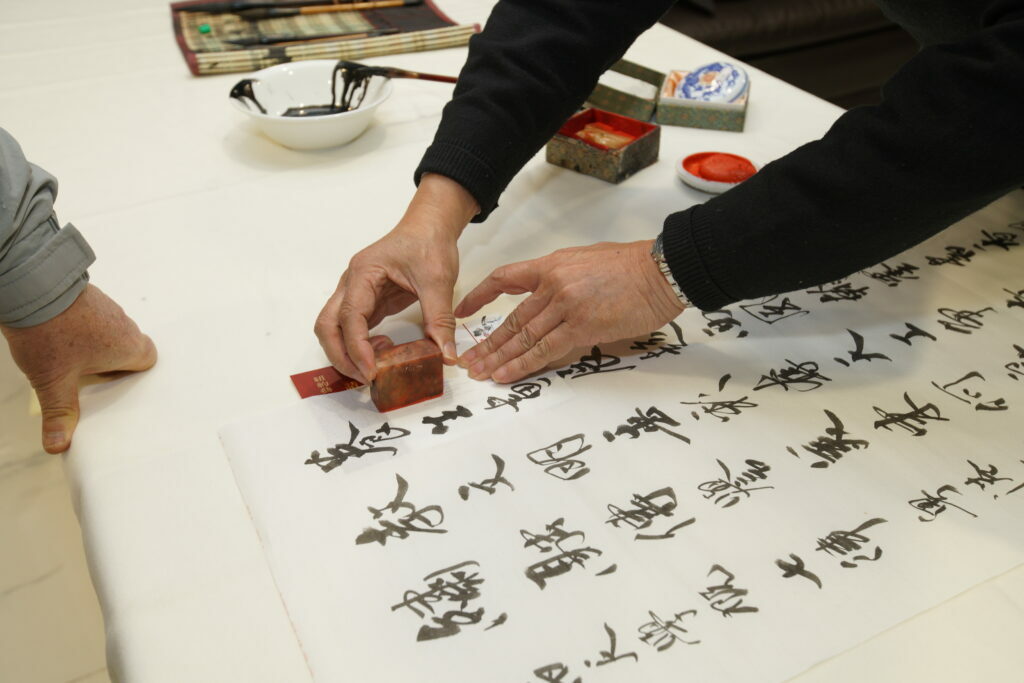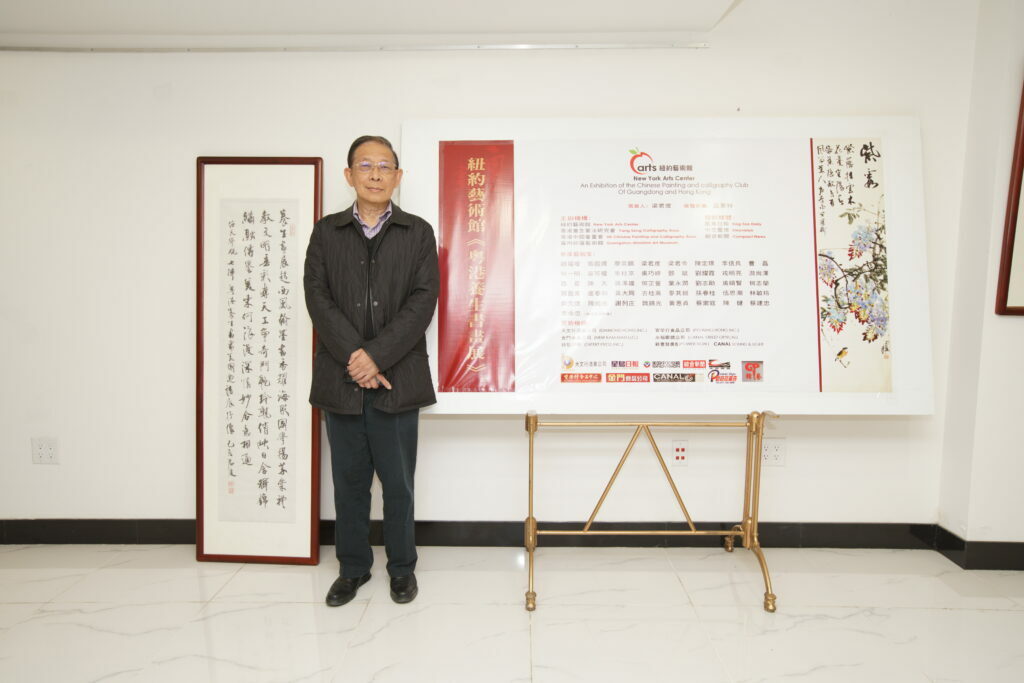The New York Arts Center, the Hong Kong Health Calligraphy Research Association, the Hong Kong Chinese Painting and Calligraphy Association, the Guangzhou Miaolian Art Museum, and other institutions, the special project [Calligraphy Health] of the [Guangdong-Hong Kong Health Painting and Calligraphy Exhibition] co-organized by Sing Tao Daily, Chinese TV, and Comprehensive News, held a conference on April 21st. The New York State Senate Chinese representatives and community celebrities came to congratulate.
The calligraphy health speech was given by Mr. Jundu Liang. The content revolves around the characteristics of traditional calligraphy, the expression of truth, the goods and beauty, the practice of painting and calligraphy, and the realization of Zen. He leads the guests into the art hall and explain the beauty of China. Mr. Liang also took the opportunity and allowed participants to learn how to use Chinese brushes. Through the introduction of traditional brushwork, penpower, style, and brushwork, the students will master the basics in using and practicing methods of calligraphy internal strength, as well as, regulating physical and mental health, and achieving health care effects.

Mr. Liang Jundu pointed out the only ancient civilizations of the world’s four ancient civilizations that can preserve ancient scripts to this day is China. Calligraphy cannot leave words, words demand beauty, calligraphy must obey the law, and these ancients writings sum up by the eight basic strokes: side (point) , Le (horizontal), Nu (straight), 趯 (hook), policy (rear), plunder (long 撇), 啄 (short 撇), 磔 (捺). These eight strokes can be expressed using the word “Yong”. All the paintings are welcoming and gathering, and they are in a relationship. Therefore, it is said that people who practice calligraphy are required to write dozens of “Yong” characters almost every day.
There are two kinds of calligraphy. The first is tradition and the second is innovation. The ancient traditional calligraphy font can be transformed into a new type of calligraphy font, a new way to admire and acknowledge calligraphy. The ancient calligrapher, Wang Xianzhi’s technique of calligraphy is created and inherited from his father Wang Xizhi. This kind of tradition and innovation is different from today’s calligraphy. Today’s art of calligraphy are formed from ugly font. Its rule of art is not to be beautiful because it has to be beautiful, but to change the beauty into ugliness, which reversed the aesthetics of Chinese characters. Writing calligraphy seems to be the same as practicing breathing that requires: calming down, concentration, and settlement, as well as achieving the vision of cultivation.


